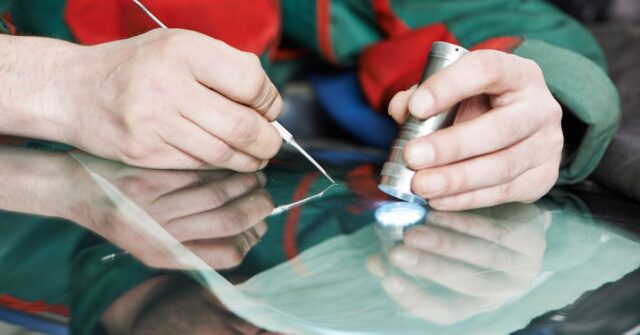Technology continues to evolve, smartly integrating into every aspect of our lives and making them better, and more convenient. The automotive industry is not left out in this technological revolution.
This article delves into the transformative power of smart glass technology in the world of car windows including windscreens, with a particular focus on the Australian market.
Introduction to Smart Glass Technology
At its most basic, smart glass technology, also known as switchable glass, represents a type of glass that can change its properties according to light, temperature, or electrical stimuli.
This innovative technology allows car owners to manipulate the amount of light and heat entering their vehicles, making driving more comfortable and energy efficient.
What is Smart Glass Technology?
Smart glass technology essentially refers to a type of glass that can change its light transmission properties due to light, heat, or electricity.
In practical terms, this means that it can switch from being transparent to opaque, or vice versa, at the touch of a button.
This provides users with manual or automatic control over the amount of light and heat that enters a space.
History of Smart Glass Technology
The history of smart glass technology can be traced back to the 1980s. Initially, it was not as widely used due to the high cost associated with its production.
However, continuous technological advancements have made smart glass technology more cost-effective and versatile, paving the way for its current widespread use across various sectors such as architecture, aviation, and of course, the automotive industry.
The Science Behind Smart Glass
Smart glass technology utilizes different techniques, each one unique in its mode of operation.
The most common methods include Electrochromic, PDLC (Polymer Dispersed Liquid Crystal), and SPD (Suspended Particle Devices).
Electrochromic Technology
Electrochromic technology is the most commonly used method in smart glass production. The science behind this involves moving ions through a special material positioned between two layers of glass.
Upon the application of voltage, the ions move, altering the light transmission properties of the glass.
Once the state is changed, it remains that way without the need for continuous electricity, thus saving energy.
PDLC (Polymer Dispersed Liquid Crystal) Technology
PDLC or Polymer Dispersed Liquid Crystal technology involves a layer of liquid crystals embedded within a polymer matrix.
This is then sandwiched between two layers of glass. When an electrical current is applied, the liquid crystals align to permit light passage, making the glass transparent.
When the current is off, the liquid crystals disperse randomly, scattering light, and causing the glass to become opaque.
SPD (Suspended Particle Devices) Technology
SPD, also known as Suspended Particle Devices technology, works by suspending microscopic particles in a thin film layer between two layers of glass.
In the absence of voltage, the particles scatter light, making the glass opaque. However, with voltage, the particles align and allow light to pass, making the glass transparent.
Varying the voltage can control the level of transparency.
Smart Glass Technology in the Automotive Industry
The adoption of smart glass technology in the automotive industry has been gaining momentum.
This trend has been fuelled by the myriad benefits it brings to the driving experience, including improved climate control, privacy, and safety.
Evolution of Car Windows: From Manual to Smart
The journey of car windows has been long and transformative. From the rudimentary manual roll-down windows to today’s smart glass windows, the progression is evident.
Smart glass technology has added a layer of convenience, efficiency, and privacy that has been a game-changer in the automotive industry.
Current Applications of Smart Glass in Cars
Smart glass is currently being utilized in various aspects of car design. For instance, it is used in sunroofs and rear windows to control the amount of light and heat entering the car.
Some high-end vehicles even use it in windshields to automatically adjust light levels and prevent glare. Smart glass also plays a crucial role in improving privacy and security in vehicles.
Benefits of Using Smart Glass in Cars
Smart glass technology brings a multitude of benefits to car owners and users. These benefits range from increased comfort and convenience to enhanced energy efficiency and security.
Increased Comfort and Convenience
With smart glass, drivers and passengers can adjust the level of light and heat entering the car with the touch of a button.
This greatly enhances comfort and makes the driving experience more enjoyable. It also reduces the need for window shades or blinds, thus providing unobstructed views of the surroundings.
Energy Efficiency and Climate Control
By controlling the amount of sunlight entering the car, smart glass helps reduce the load on the air conditioning system, thus enhancing energy efficiency.
This can also contribute to extending the battery life in electric vehicles, making smart glass an environmentally friendly choice.
Enhanced Safety and Security
Smart glass enhances safety by reducing glare and allowing drivers to focus better on the road.
Furthermore, when in opaque mode, smart glass can act as a security feature, concealing the interior of the car from potential thieves.
Privacy Benefits
Smart glass can switch from transparent to opaque, providing instant privacy when needed.
This is particularly useful in situations where car owners need to temporarily leave their vehicle unattended, as it can obscure the view from outside, thus keeping the car’s contents hidden from sight.
The Australian Context
The use of smart glass technology in cars has been steadily increasing in Australia.
This can be attributed to the growing awareness of the benefits it offers, coupled with the rising demand for energy-efficient and environmentally friendly solutions in the automotive industry.
Adoption of Smart Glass Technology in Australia
Smart glass technology has found a place in the Australian automotive market, where it’s being adopted by various car manufacturers in their latest models.
Consumers are drawn to its numerous advantages, including comfort, convenience, and the cutting-edge look it imparts to their vehicles.
Regulations Impacting Smart Glass Usage in Australian Cars
As with any technological innovation in the automotive industry, the use of smart glass in cars in Australia is subject to certain regulations.
These regulations are in place to ensure safety and fair competition in the market.
While they can sometimes pose a challenge, they are also a testament to the level of care and attention that goes into the production of vehicles in Australia.
The Future of Smart Glass Technology in Cars
Given the myriad benefits and rapidly increasing adoption of smart glass technology, it is set to play a crucial role in the future of the automotive industry.
Emerging innovations promise to make this technology even more efficient and versatile, with a range of potential applications that could transform the driving experience as we know it.
Emerging Innovations in Smart Glass Technology
As technology advances, we can expect to see even more innovative applications of smart glass in cars.
For instance, research is being conducted into the use of smart glass for display purposes, turning car windows into touch screens for information and entertainment.
There is also potential for integration with other smart technologies, such as sensors and AI, to further enhance functionality and convenience.
Potential Impact on the Australian Automotive Market
The continued adoption and development of smart glass technology have the potential to significantly impact the Australian automotive market.
With its many benefits, it could become a standard feature in many cars in the near future.
This could give a boost to the automotive industry and contribute to making driving safer, more comfortable, and more efficient for all Australians.
Challenges and Opportunities Ahead
While the future of smart glass technology in cars looks promising, there are also challenges to be overcome.
These include reducing production costs, improving durability, and addressing potential regulatory issues.
However, these challenges also represent opportunities for innovation and growth, making the future of smart glass technology in cars an exciting prospect to watch.
Conclusion
In conclusion, smart glass technology is poised to be a game-changer in the automotive industry.
With its array of benefits and potential for future innovation, it is set to redefine the driving experience and make our journeys more comfortable, efficient, and enjoyable.
Smart Glass as a Game Changer in the Automotive Industry
As we have seen, smart glass technology holds the potential to dramatically transform the automotive industry, particularly in the context of car windows.
From improved comfort and energy efficiency to enhanced safety and privacy, the benefits are clear.
As the technology continues to develop and become more accessible, we can expect to see more and more cars on Australian roads harnessing the power of smart glass to deliver a superior driving experience.





